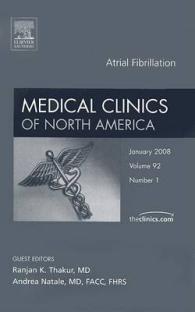- ホーム
- > 洋書
- > 英文書
- > Architecture
Full Description
Ten years ago, Clare Nash was struggling with a common problem: how to be an architect and still have a life. With no job, no savings and no clients in the midst of a recession, Clare set up her own practice with little more than a few postcards in local shop windows and a very simple website. Determined to better combine her life and family with professional work, she created an innovative practice that is flexible and forward-looking, based around remote working and the possibilities offered by improving technology.
Bursting with tips, ideas and how-tos on all aspects of designing a working life that suits you and your business, this book explains in clear and accessible language how to avoid the common pitfalls of long hours and low pay. It explores how to juggle work with family commitments, how to set your own career path and design priorities, and how to instil a flexible working culture within a busy lifestyle.
Encompasses the full range of life-work challenges:
• Money, fees and cashflow
• Playing to your personal strengths
• Outsourcing areas of weakness
• Building a happy and productive remote-working team
• Creating a compelling marketing strategy
• Juggling parenthood and work
• Studying and honing workplace skills.
Provides the inside view from innovative practices:
alma-nac, Gbolade Design Studio, Harrison Stringfellow Architects, Invisible Studio Architects, Office S&M Architects, POoR Collective, Pride Road Architects and Transition by Design.
Contents
Acknowledgements
About the author
Introduction
Chapter 1 How to be a business owner architect
Chapter 2 How to be an architecture student (and
still have a life)
Chapter 3 Background
Chapter 4 Going solo
Chapter 5 Team
Chapter 6 Niche and marketing
Chapter 7 My mistakes
Chapter 8 Systems and efficiencies
Chapter 9 Business and baby
Chapter 10 Case studies
Case study 1: Office
S&M
Case study 2:
Stringfellow
Case study 3: Piers
Taylor
Case study 4: TbD
Case study 5: Gbolade
Case study 6: alma-nac
Case study 7: Pride Road
Case study 8: Poor
Conclusion








